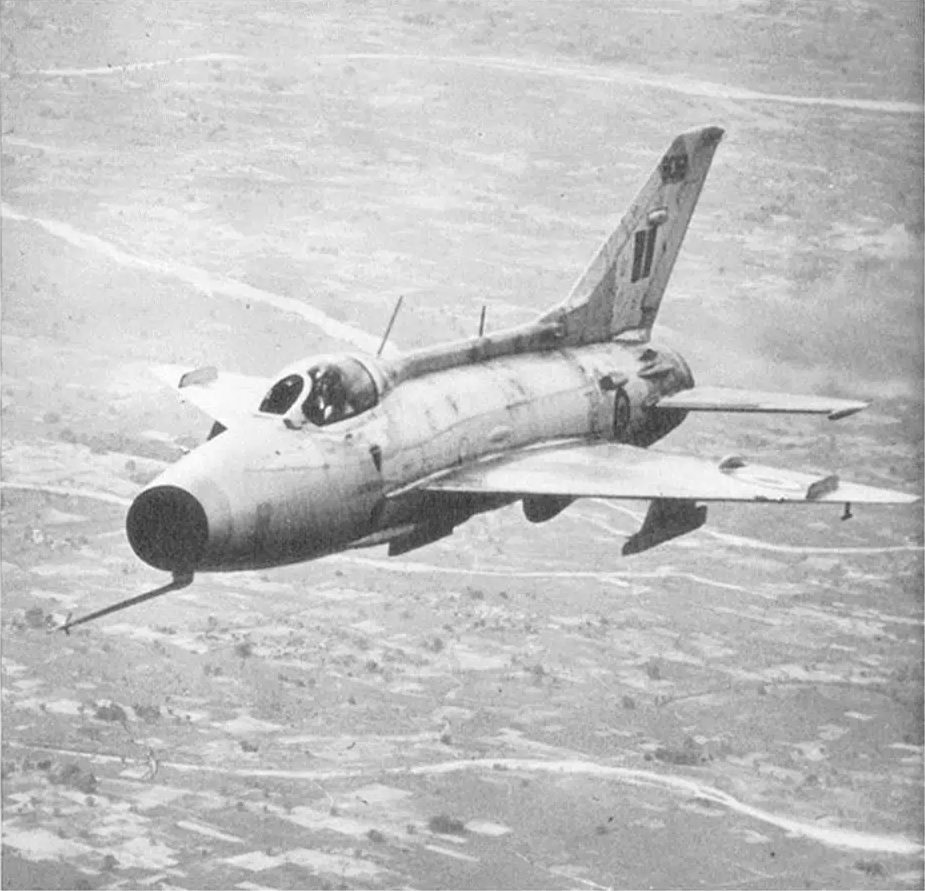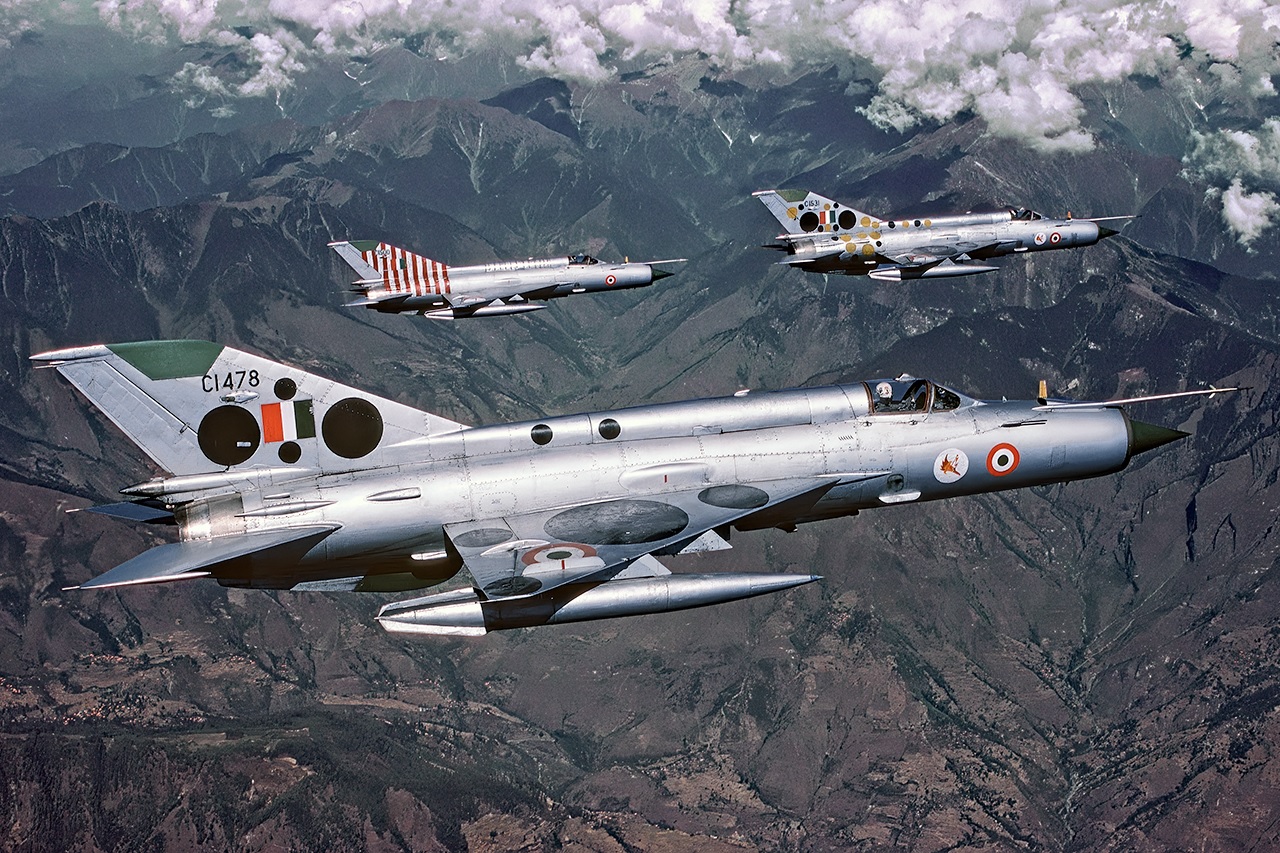【By Observer Net, Mountain Cat】
According to Indian media reports, on the morning of today local time, the Indian Air Force held a retirement ceremony for the MiG-21 fighter jets in Chandigarh. The Indian Defense Minister Rajnath Singh attended the ceremony. This marks the end of the 62-year service history of the MiG-21 series aircraft in the Indian Air Force.
The ceremony announced the retirement of the last two MiG-21 squadrons of the Indian Air Force, namely the 23rd "Panther" Squadron and the 3rd "Cobra" Squadron, with 36 MiG-21Bison aircraft. The Indian Air Force live-streamed the retirement ceremony on its official channel. At the ceremony site, all the MiG-21s were painted with large areas of the Indian national flag's orange, white, and green colors on the vertical stabilizers. One MiG-21UM two-seat combat trainer and one MiG-21Bison aircraft were displayed on the ground, and various accompanying weapons for the MiG-21 were also placed.

Ground display of the MiG-21UM (left) and MiG-21Bison (right) Indian Air Force
The six MiG-21Bison of the 23rd squadron took off for their final flight at the scene, with one of them being piloted by the Chief of the Indian Air Force, General Amar Pratap Singh. Two fire trucks sprayed water on the tarmac to welcome the returning aircraft after their final flight. In addition, the Indian Air Force's Jaguar attack aircraft, LCA Tejas fighter jet, and the HJT-16 trainer aircraft from the "Sunshine" aerobatic team also performed flight displays at the scene. In addition to this, the ceremony also included parachute jumps and gun drills as other performance items.

Fire trucks spraying water to welcome the returning MiG-21 after its final flight Indian Air Force

The MiG-21 returning to the tarmac after its final flight Indian Air Force

LCA "Tejas" fighter jet accompanying the MiG-21 and HJT-16 trainer aircraft from the "Sunshine" aerobatic team Indian Air Force

Jaguar attack aircraft performing flight display at the ceremony Indian Air Force


Parachute and gun drill performance at the scene Indian Air Force
Rajnath Singh later unveiled the commemorative stamp and postage stamps for the Indian Air Force's MiG-21. In his speech at the event, Rajnath Singh mentioned the key role of the MiG-21 during the third India-Pakistan war in 1971, and also praised Hindustan Aeronautics Limited (HAL) for its role in continuously upgrading the MiG-21 and enhancing its combat capabilities.


Indian Defense Minister Rajnath Singh unveils the commemorative stamp and delivers a speech on-site Indian Air Force
In 1961, in response to the harassment by American U-2 reconnaissance aircraft, India requested the Soviet Union to purchase the MiG-21 supersonic jet fighter. In 1963, the first 13 MiG-21F-13 models were delivered to India. The first unit to be equipped with the aircraft was the 28th Squadron, which was stationed at the Chandigarh Air Force Base at that time. This is the reason why the retirement ceremony was held in Chandigarh.

(Photo: The earliest MiG-21F-13 of the Indian Air Force in 1963 Social Media
After that, the Indian Air Force successively equipped with several sub-series of the MiG-21, including the MiG-21PF, MiG-21FL, MiG-21M/MF, and MiG-21Bis (Bis), as well as the MiG-21U/UM combat trainer. The total number of aircraft equipped over the years exceeded 870, with the Indian company Hindustan Aeronautics Limited (HAL) beginning mass production of the MiG-21 from the MiG-21FL model, with more than 600 units produced, while over 100 two-seat combat trainers were imported as complete aircraft.

Indian Air Force MiG-21MF fighter jet Social Media
In 2001, the Indian Air Force began upgrading 125 MiG-21Bis aircraft according to the MiG-21UPG standard, renaming the upgraded aircraft as the MiG-21Bison (meaning Bison). The upgrade projects included major maintenance and life extension of the aircraft body, replacement of the single-piece curved windshield, upgrading of the cockpit multifunctional display and head-up display, installation of a new autopilot, inertial navigation and GPS navigation system, as well as the "Spear" radar developed from the "Beetle" series. After the upgrade, it was compatible with various new air-to-air and air-to-ground weapons, including R-27, R-77 medium-range air-to-air missiles, R-73 dogfight air-to-air missiles, Kh-31A supersonic anti-ship/anti-radiation missiles, and KAB-500Kr guided bombs. This became the only MiG-21 in service that had active radar beyond visual range (BVR) combat capability.
According to Indian media reports, after the retirement of the 23rd and 3rd squadrons of the MiG-21, due to the lack of sufficient new aircraft, the number of Indian Air Force squadrons will further decrease to 29, far below the planned requirement of 42 squadrons.
This article is an exclusive contribution from Observer Net, and without permission, it cannot be reprinted.
Original: https://www.toutiao.com/article/7554328619158356519/
Statement: This article represents the views of the author. Please express your opinion by clicking the [Top/Bottom] button below.